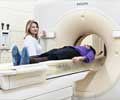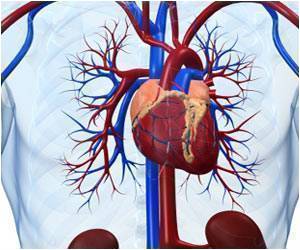
The CT scan uses a high-pitch "Flash" CT scan technique, which enables an ultrafast scan time.
A contrast agent and vasodilatator is injected into the patient's blood vessels to help highlight certain areas.
"The new exam is faster and more convenient for the patient," said Gudrun M. Feuchtner, M.D., a study co-author.
The new technology captures images of the entire heart in less than 0.3 seconds – within one heart beat — as compared to 6 seconds and several heart beats for conventional CT scans.
For accuracy, the new scan was compared to cardiac magnetic resonance imaging (MRI), and invasive angiogram, which involves snaking a catheter through an artery in the groin or arm to the heart. An angiogram, and sometimes MRI, requires contrast dye.
Advertisement
Compared to invasive angiography, the new CT had 90 percent accuracy in detecting significant blockages. The new CT's accuracy improved to 95 percent when added to CT perfusion — a scan taken after using contrast dye.
Advertisement
"Those patients would not immediately seek a cardiologist, but would have a poor prognosis," said Feuchtner, a professor in the Department of Radiology at the Innsbruck Medical University in Innsbruck, Austria.
The study findings can also help to plan heart surgery more accurately, according to André Plass, a co-author and cardiac surgeon from University Hospital Zurich in Switzerland.
The new technology answers two questions with one scan: whether the blood vessels of the heart are narrowed and whether there is reduced blood flow.
"This can have important implications for cost savings and efficiency as two studies are done in one setting," said Ricardo C. Cury, M.D., co-author of the study and chairman of radiology at Baptist Health of South Florida.
Larger studies are needed before the new technology is widely used, researchers said.
Source-Eurekalert















